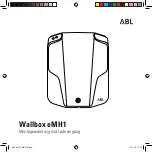
BYD AUTO S6, S6A, S6K Owner's Manual
Driving Guidelines 2-5
ABS (Anti-lock Brake System)
The ABS helps prevent the wheels
from locking when the brakes are
applied suddenly and firmly or applied
on a slippery surface, helping to
ensure excellent driving stability and
steering performance of the vehicle.
.It is easy to activate the ABS in wet
weather conditions such as rain or
snow, when depressing the brake
pedal on roads with a low friction
coefficient. You just need to depress
the brake pedal firmly to activate ABS,
so do not depress the brake pedal
repeatedly in emergency braking.
When ABS is operating, the following
may occur, but they are normal
phenomena:
1. Hear the ABS operating sound, or
feel the pulse of brake pedal and the
vibration of steering wheel.
2. When the vehicle starts or stops,
you may hear some operating sounds
of the ABS solenoid valve and
hydraulic pump for a few seconds
from the engine cabin.
3. At the end of the ABS operation,
the brake pedal may move forward.
WARNING
●
Though the ABS is helpful to keep
the vehicle stable, it is also very
important to observe all
precautions, maintain proper
driving speed and safe
vehicle-to-vehicle distance. There
is a limitation of ABS's effects on
vehicle stability and steering wheel
controlling capability, even if the
ABS functions normally.
●
If the anti-skid performance of
tyres is beyond their capability or
wheelspin occurs when driving at
high speed, it is hard for ABS to
continue to control the vehicle.
The size and pressure of all tyres
should be as specified for the
original car: the ABS uses wheel
speed sensors to measure the
speed of each wheel to obtain the
speed of a vehicle. If you use a
non-specified tyre, it may result in
incorrect wheel rotation speed, and
even abnormal ABS function.
●
ABS is not designed to shorten
the braking distance. Under the
following conditions, vehicles with
Tips
Free travel of the brake pedal is
(1-5)mm, and the brake clearance is
≤0.15 mm.
















































